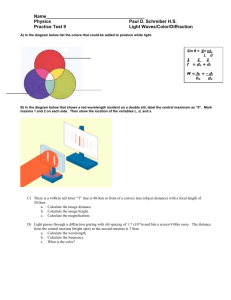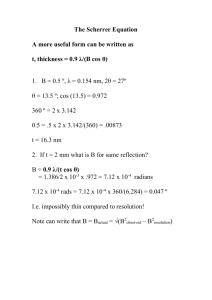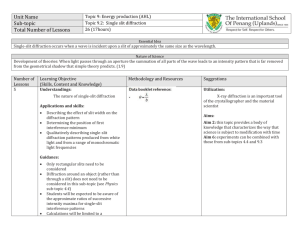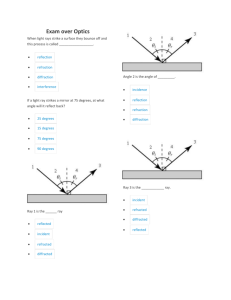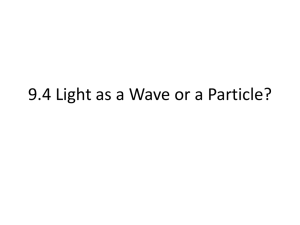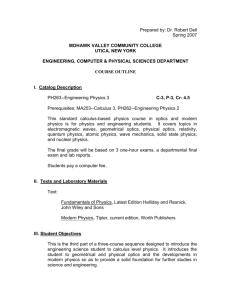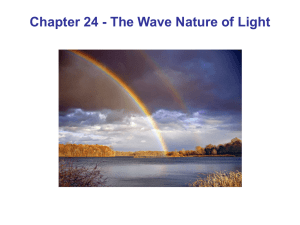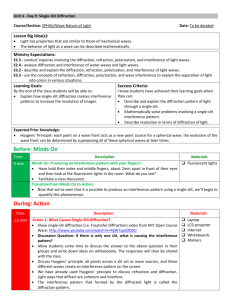topic 4.4 - Uplands blogs
advertisement
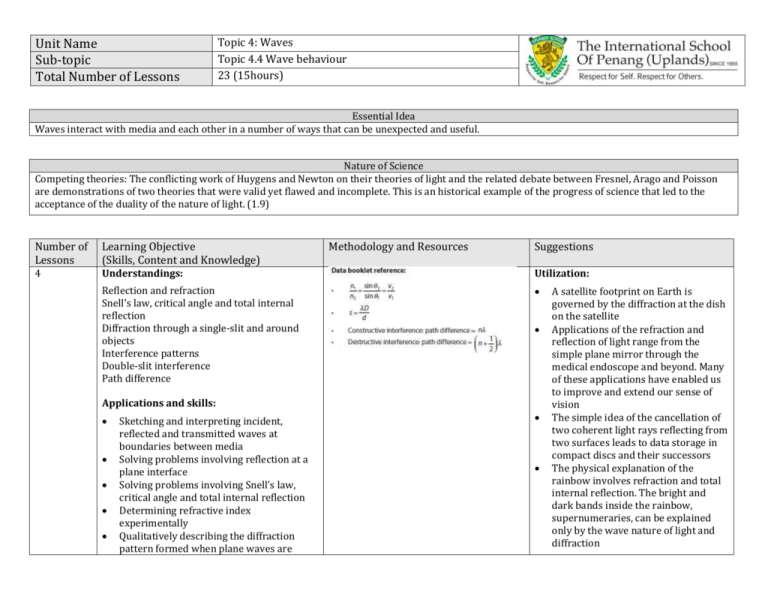
Unit Name Sub-topic Total Number of Lessons Topic 4: Waves Topic 4.4 Wave behaviour 23 (15hours) Essential Idea Waves interact with media and each other in a number of ways that can be unexpected and useful. Nature of Science Competing theories: The conflicting work of Huygens and Newton on their theories of light and the related debate between Fresnel, Arago and Poisson are demonstrations of two theories that were valid yet flawed and incomplete. This is an historical example of the progress of science that led to the acceptance of the duality of the nature of light. (1.9) Number of Lessons Learning Objective (Skills, Content and Knowledge) Methodology and Resources Suggestions 4 Understandings: Utilization: Reflection and refraction Snell’s law, critical angle and total internal reflection Diffraction through a single-slit and around objects Interference patterns Double-slit interference Path difference Applications and skills: Sketching and interpreting incident, reflected and transmitted waves at boundaries between media Solving problems involving reflection at a plane interface Solving problems involving Snell’s law, critical angle and total internal reflection Determining refractive index experimentally Qualitatively describing the diffraction pattern formed when plane waves are A satellite footprint on Earth is governed by the diffraction at the dish on the satellite Applications of the refraction and reflection of light range from the simple plane mirror through the medical endoscope and beyond. Many of these applications have enabled us to improve and extend our sense of vision The simple idea of the cancellation of two coherent light rays reflecting from two surfaces leads to data storage in compact discs and their successors The physical explanation of the rainbow involves refraction and total internal reflection. The bright and dark bands inside the rainbow, supernumeraries, can be explained only by the wave nature of light and diffraction incident normally on a single-slit Quantitatively describing double-slit interference intensity patterns Guidance: Quantitative descriptions of refractive index are limited to light rays passing between two or more transparent media. If more than two media, only parallel interfaces will be considered Students will not be expected to derive the double-slit equation Students should have the opportunity to observe diffraction and interference patterns arising from more than one type of wave Aims: Aim 1: the historical aspects of this topic are still relevant science and provide valuable insight into the work of earlier scientists Aim 6: experiments could include (but are not limited to): determination of refractive index and application of Snell’s law; determining conditions under which total internal reflection may occur; examination of diffraction patterns through apertures and around obstacles; investigation of the double-slit experiment Aim 8: the increasing use of digital data and its storage density has implications on individual privacy through the permanence of a digital footprint Links to Theory of Knowledge Huygens and Newton proposed two competing theories of the behaviour of light. How does the scientific community decide between competing theories? International Mindedness (Reference to Local, National and World Issues) Characteristic wave behaviour has been used in many cultures throughout human history, often tying closely to myths and legends that formed the basis for early scientific studies

